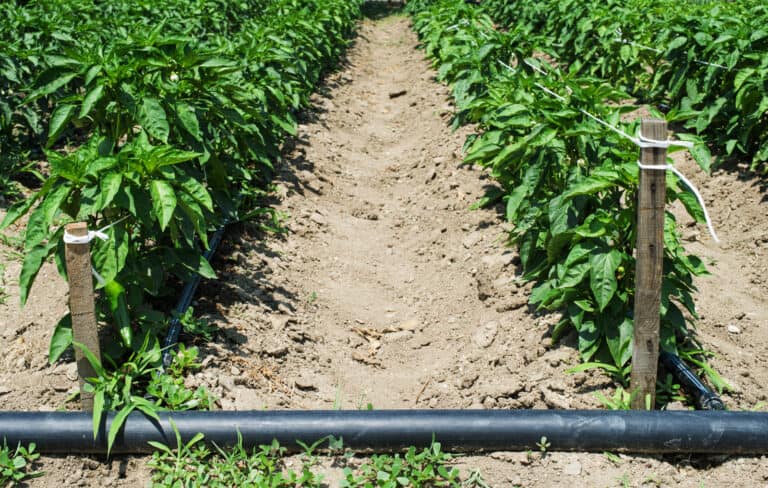How to save pepper seeds for next season (hot and sweet)
Saving seeds from your garden is a practical and rewarding activity that can help you create a sustainable and cost-effective gardening routine. Whether you grow mild bell peppers or intense scorpion peppers, saving seeds allows you to preserve the unique traits of your favorite plants and prepare for future gardening seasons. This guide will take you step by step through the process of saving pepper seeds, so you can successfully use them for planting next season.
Benefits of saving pepper seeds
Saving pepper seeds has several benefits, making it a valuable practice for gardeners of all levels.
Save money and become self-sufficient
One of the primary benefits of saving pepper seeds is the cost savings. By preserving seeds from your harvest, you can avoid purchasing new seeds each year. This not only saves money but also contributes to self-sufficiency in your gardening efforts. You gain greater control over your garden’s production and can take pride in knowing that the plants you grow come from seeds you saved yourself.
Share seeds with your friends, neighbors, and community
Pepper plants can produce a large number of seeds. For instance, a single pepper can yield up to 100 seeds. With such an abundance, you can share seeds with friends, neighbors, and fellow gardeners. This practice not only spreads the joy of gardening but also helps others start their own seed-saving journey. Sharing seeds can strengthen community ties and promote gardening as a collective activity.
Develop unique climate-adapted varieties
Over time, seeds that are saved and replanted will adapt to the specific conditions of your local climate. This natural selection process results in plants that are better suited to thrive in your garden’s environment. By continuously saving seeds, you can develop pepper varieties that are more resilient to local pests, diseases, and weather patterns. This adaptation process can lead to more robust and productive plants in your garden.
Improve fruit quality
When you save seeds from the best-performing plants in your garden, you can enhance the quality of your future harvests. By selecting seeds from peppers that exhibit the most desirable traits—such as flavor, size, and texture—you can gradually improve the overall quality of the fruits your garden produces. This selective breeding allows you to tailor your plants to your personal preferences and enjoy better yields each season.
How to save pepper seeds
Once you understand the benefits, it’s time to get into the practical steps of saving pepper seeds. Follow these guidelines to successfully save seeds from your pepper plants.
Use ripe peppers
The first step in saving pepper seeds is to select ripe peppers. Peppers must reach full maturity before their seeds are harvested to ensure the seeds are viable. For example, if you typically harvest jalapeños while they’re still green, you’ll need to wait until they turn red and fully mature before harvesting seeds. You’ll know the peppers are ready when they soften and can be easily picked by hand.
Remove the seeds
When handling hot peppers, it’s essential to wear gloves to protect your hands from capsaicin, the compound that causes a burning sensation. Start by slicing off the top of the pepper, where most of the seeds are concentrated. Then, gently roll the pepper against a cutting surface and shake it upside down to release the seeds. To collect as many seeds as possible, slice the pepper in half and remove any remaining seeds. Be sure to discard any seeds that appear disfigured, damaged, or discolored, as these are less likely to be viable.
Let the seeds dry
Once you’ve collected the seeds, the next step is to dry them. Spread the seeds in a single layer on a hard surface, such as a plate or tray. Avoid using paper towels, as their porous surface may encourage the seeds to germinate instead of drying properly. Place the seeds in a well-ventilated area and allow them to dry for about a week. To ensure even drying, turn the seeds daily. You can also use a fan to improve air circulation. The seeds are fully dried when they become brittle to the touch.
Label and store them
Remember to label your seeds! Grab a small glass jar or a ziplock bag and seal your dried seeds inside. Store them in the refrigerator or a cool, dark place like a basement for optimal preservation. Maintaining a stable, cool environment will help preserve the seeds’ viability until you’re ready to plant them.
Can you plant seeds straight out of the pepper?
Usually, gardeners save seeds in the fall to plant in the spring. But is it possible to plant seeds straight from the pepper without drying them first?
I put this theory to the test in 2024, hoping to grow Biquinho peppers over winter because I had used up all of the seeds I purchased. I cut the fruit in half, removed the seeds, and immediately planted them. So far, they germinated slightly more slowly than the other seeds I planted, but they still had a germination rate of 100%!
I now have multiple thriving biquinho plants growing in my garden, and have saved a new batch of seeds for next year.
So from my personal experience and experimentation: yes, you can plant seeds straight out of the pepper. However, your results may vary depending on the fruit quality you’re working with.
Avoiding disease as you save seeds
When saving seeds, disease prevention is essential to maintaining a healthy garden. Follow these guidelines to reduce the risk of disease transmission and ensure the quality of your saved seeds.
Avoid saving seeds from diseased plants: Never save seeds from plants that show signs of disease. Doing so increases the likelihood of passing on the disease to the next generation of plants. Instead, only save seeds from healthy, vigorous plants that produce high-quality fruit.
Consider sterilizing your seeds (optional): For added protection against disease, you may choose to sterilize your seeds before planting. One method involves soaking the seeds in water heated to 125°F for about 30 minutes. While this step is not mandatory, it can significantly reduce the risk of disease transmission, particularly if your plants showed signs of illness during the previous growing season.
Saving seeds from hybrid vs. heirloom peppers
When saving pepper seeds, it’s important to understand the difference between hybrid and heirloom varieties, as this will impact the reliability and predictability of your future plants.
Hybrid Peppers: Hybrid peppers are the result of cross-breeding two different varieties to combine specific traits from each parent. While you can save seeds from hybrid peppers, it’s important to note that the plants grown from these seeds may not be identical to the parent plant. This is because hybrid plants don’t “breed true,” meaning the offspring can exhibit a range of traits that differ from the original hybrid. If you save seeds from hybrid peppers, be prepared for some variation in the plants you grow next season.
Heirloom Peppers: Heirloom peppers, on the other hand, have been bred within the same variety for many years, often through natural pollination methods like wind and insects. When you save seeds from heirloom peppers, the plants grown from those seeds are more likely to resemble the parent plant closely. This consistency makes heirloom peppers a popular choice for gardeners who want to maintain the characteristics of their favorite pepper varieties over time.
So, in a nutshell, while you can save seeds from both hybrid and heirloom peppers, heirloom seeds are generally more predictable and reliable. If consistency is important to you, heirloom peppers are the way to go. However, if you enjoy experimenting with new variations, hybrid seeds can offer an element of surprise and excitement in your garden.
What about cross-pollination?
Cross-pollination can occur when pollen from one pepper variety fertilizes the flowers of another variety. While this won’t affect the peppers you harvest in the current season, it can influence the characteristics of the plants grown from the seeds you save.
To prevent cross-pollination, it’s recommended to keep different pepper varieties at least 150 feet apart. However, in most home gardens, space limitations make this difficult. An alternative method to prevent cross-pollination is to use fine mesh bags to isolate the flowers of the peppers from which you want to save seeds. By hand-pollinating these flowers, you can ensure that the seeds you save will produce plants with characteristics similar to the parent plant.
Most gardeners avoid unintentional cross-pollination unless they’re intentionally trying to create new hybrid varieties. If cross-pollination does occur, the seeds you save may produce plants with unpredictable traits, which can be an exciting opportunity for experimentation.
How to test if your seeds are still viable
Before planting your saved seeds, it’s a good idea to test their viability. This will help you avoid wasting time and resources on seeds that are unlikely to germinate.
Viability test in advance (optional)
If you have an abundance of seeds, you can conduct a viability test a few weeks before your intended planting date. This test will give you an idea of the germination rate, allowing you to discard any seeds that don’t pass the test. Alternatively, you can test the seeds immediately before planting and use only the viable ones.
Water test
One simple method for testing seed viability is the water test. Place your seeds in a container of water and let them soak for about 15 minutes. Seeds that sink to the bottom are likely still viable and can be planted. Seeds that float to the surface are less likely to germinate and should be discarded.
Paper towel test
Another reliable method is the paper towel test. Wet a paper towel, fold the seeds into it, and place the towel with the seeds inside a ziplock bag. Keep the bag in a warm area, such as on a heat mat or near a sunny windowsill. Spray the paper towel daily to keep it moist.
Once your tests are complete, you can calculate the germination rate by determining the percentage of seeds that successfully sprouted. To do this, divide the number of seeds that germinated by the total number of seeds tested, then multiply by 100 to get the percentage. For example, if you tested 10 seeds and 7 of them sprouted, the germination rate would be 70%. If the germination rate is below 50%, it indicates that the seeds’ viability has significantly declined, and you might want to buy new seeds instead.
Whether you’re growing hot or sweet peppers, seed saving is a valuable skill that brings cost savings, self-sufficiency, and the joy of experimentation to your gardening journey.






